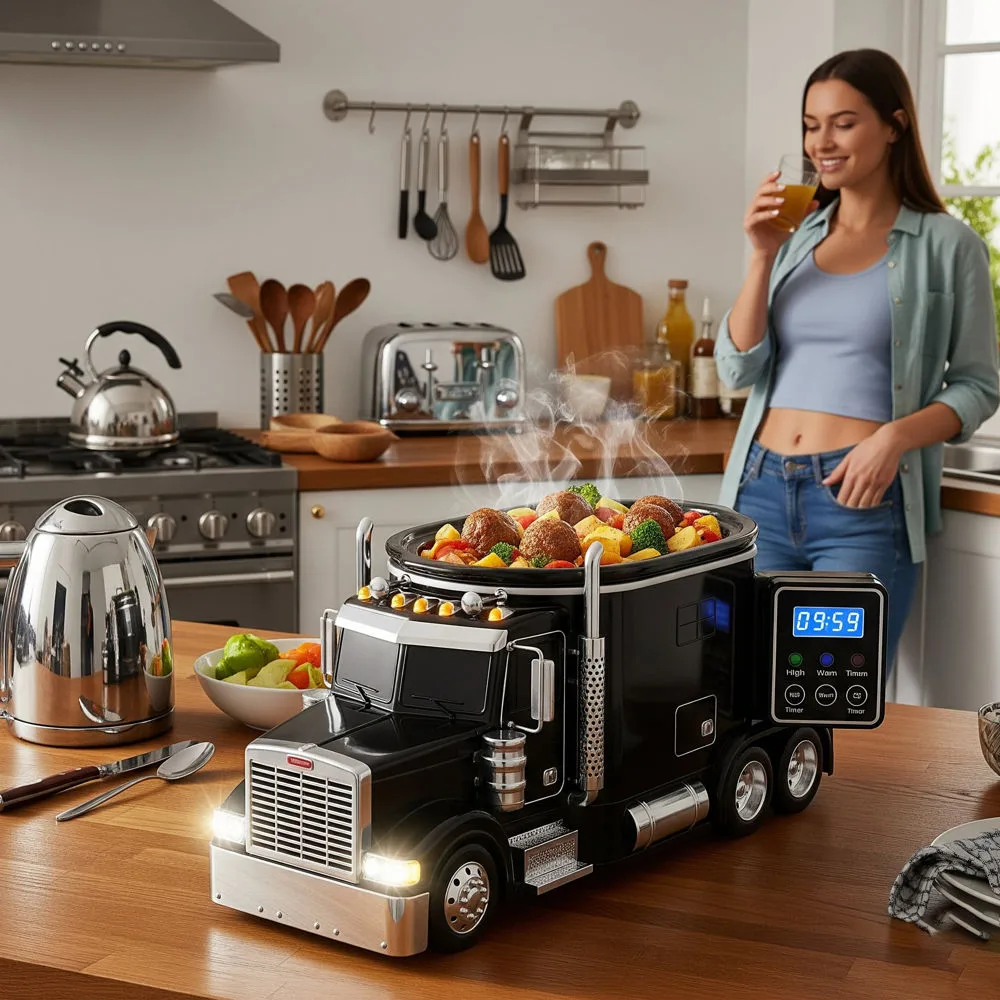Long haul trucking presents unique challenges when it comes to maintaining a healthy diet and managing meal expenses. Professional drivers spend weeks away from home, often relying on expensive truck stop food or unhealthy fast food options. However, the advent of the semi truck slow cooker has transformed how drivers approach nutrition and meal preparation on the road.
A semi truck slow cooker represents more than just a cooking appliance; it’s a gateway to healthier eating, significant cost savings, and the comfort of home cooked meals while navigating America’s highways. This comprehensive guide explores everything you need to know about incorporating slow cooking into your trucking lifestyle.
Understanding Semi Truck Slow Cookers
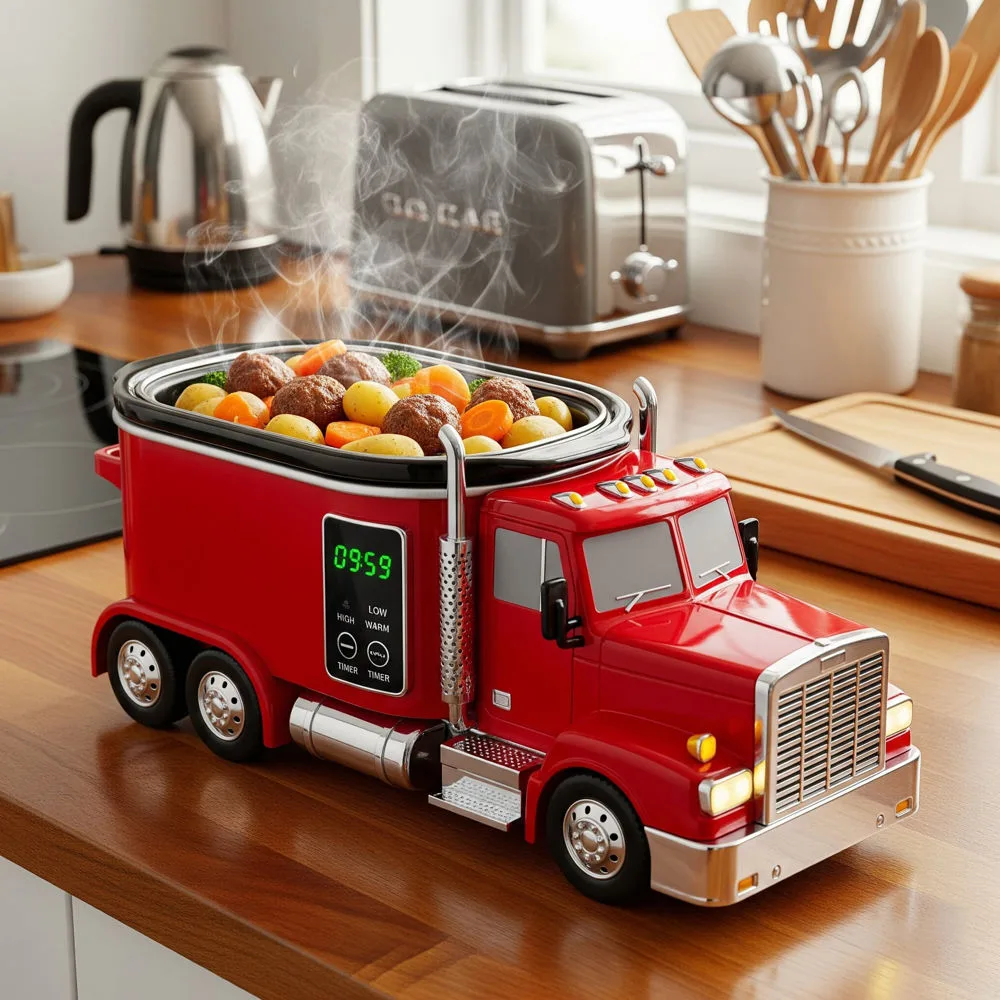
What Makes Truck Slow Cookers Different
Semi truck slow cookers are specifically engineered for the mobile environment of commercial vehicles. Unlike traditional home slow cookers that operate on standard 120V household current, truck models run on 12V or 24V DC power, drawing electricity directly from your vehicle’s electrical system.
These specialized appliances feature reinforced construction to withstand the constant vibration and movement inherent in over the road trucking. Many models include secure mounting systems, spill resistant designs, and enhanced safety features that make them ideal for the trucking environment.
Power Requirements and Electrical Considerations
Most semi truck slow cookers operate on 12V DC power, though some larger models require 24V systems. The typical power consumption ranges from 100 to 300 watts, making them manageable for most truck electrical systems when the engine is running or when connected to shore power.
Understanding your truck’s electrical capacity is crucial before installing any cooking appliance. Modern trucks with larger alternators and robust electrical systems can easily handle the additional load, while older vehicles might require electrical system upgrades or careful power management.
Types of Semi Truck Slow Cookers Available
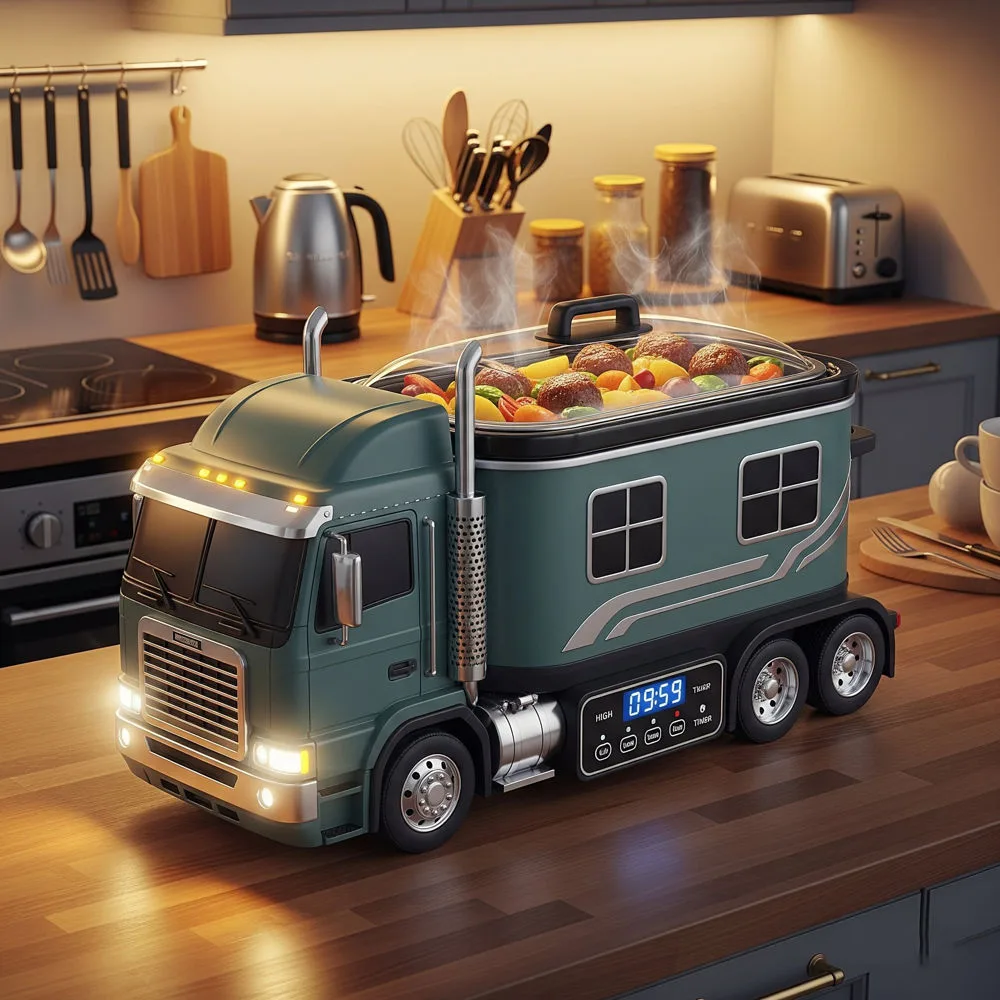
Portable 12V Models
Portable 12V slow cookers offer the greatest flexibility for truck drivers. These units typically feature capacities ranging from 1.5 to 6 quarts, making them suitable for individual meals or small batches that can last multiple days. Most portable models come with secure mounting brackets or can be safely stored in cab storage areas when not in use.
The convenience of portable units lies in their versatility. Drivers can easily move them between the cab and sleeper berth, use them at truck stops with electrical hookups, or even take them home during time off.
Permanent Installation Options
Some drivers prefer permanently mounted slow cookers that integrate into their cab’s kitchen setup. These installations often involve custom mounting solutions and direct wiring to the truck’s electrical system. While permanent installations require more initial setup, they provide a seamless cooking experience and eliminate concerns about appliance security during transit.
Multi Function Cooking Units
Advanced semi truck slow cooker models combine multiple cooking functions in one appliance. These units might include pressure cooking capabilities, steaming functions, or even rice cooking modes. Multi function units maximize the utility of limited cab space while providing diverse meal preparation options.
Installation and Setup Guidelines
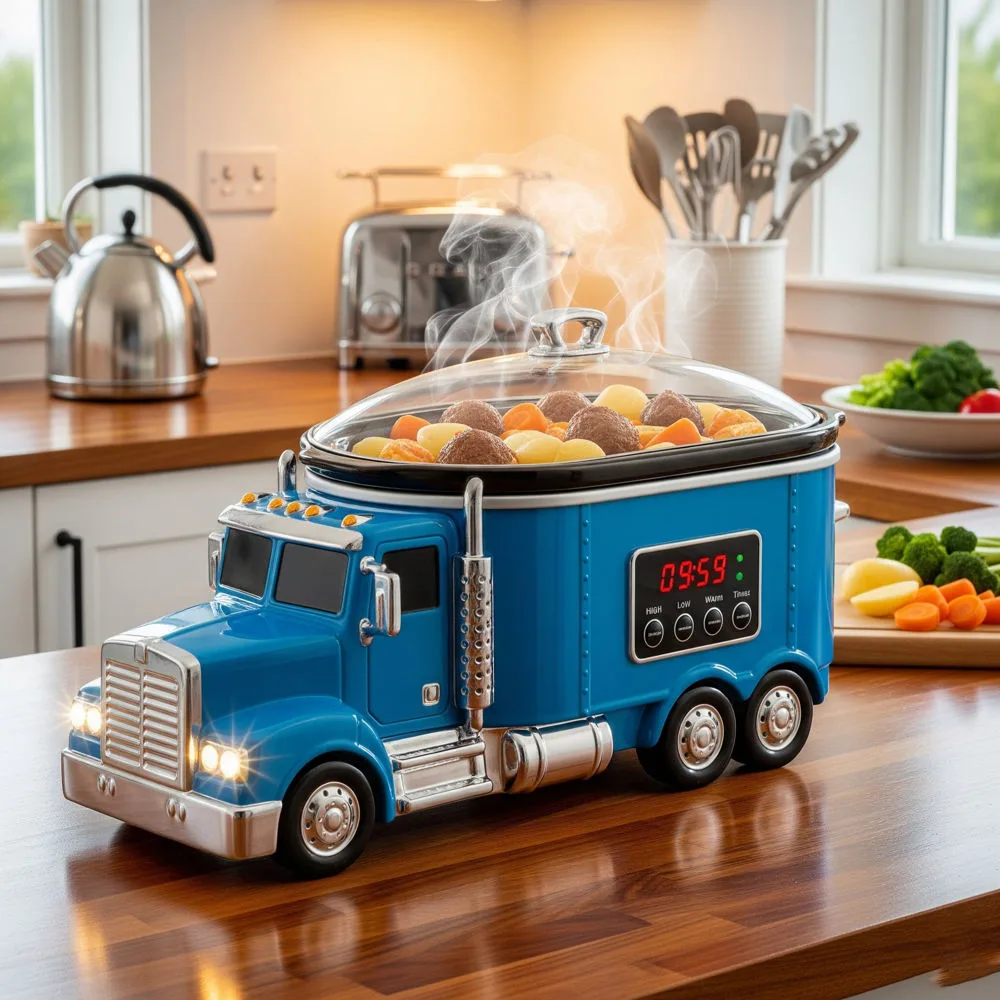
Electrical Connection Best Practices
Proper electrical installation is critical for both safety and performance. Most semi truck slow cookers connect through standard 12V outlets or require direct wiring to the truck’s electrical system. Always use appropriate gauge wiring and include proper fusing to protect your truck’s electrical system.
Consider installing a dedicated circuit for cooking appliances to prevent interference with other truck systems. Many drivers find success using a quality power inverter to convert DC power to AC, though this approach introduces some efficiency losses.
Securing Your Slow Cooker
Road vibration and sudden stops can turn an unsecured slow cooker into a dangerous projectile. Invest in quality mounting hardware designed specifically for mobile applications. Many drivers create custom mounting solutions using marine grade hardware and shock absorbing materials.
The mounting location should provide easy access while cooking, adequate ventilation around the appliance, and protection from potential spills. Common mounting locations include countertop areas in the sleeper berth or specially designed galley areas.
Ventilation and Safety Considerations
Adequate ventilation prevents moisture buildup and ensures safe operation of your semi truck slow cooker. Install exhaust fans or ensure adequate airflow around the cooking area. Some drivers install small ventilation systems specifically for cooking activities.
Never operate cooking appliances while driving unless they are specifically designed and installed for such use. Most slow cookers should only operate when the truck is stationary or with approved mounting systems that meet DOT safety requirements.
Choosing the Right Semi Truck Slow Cooker
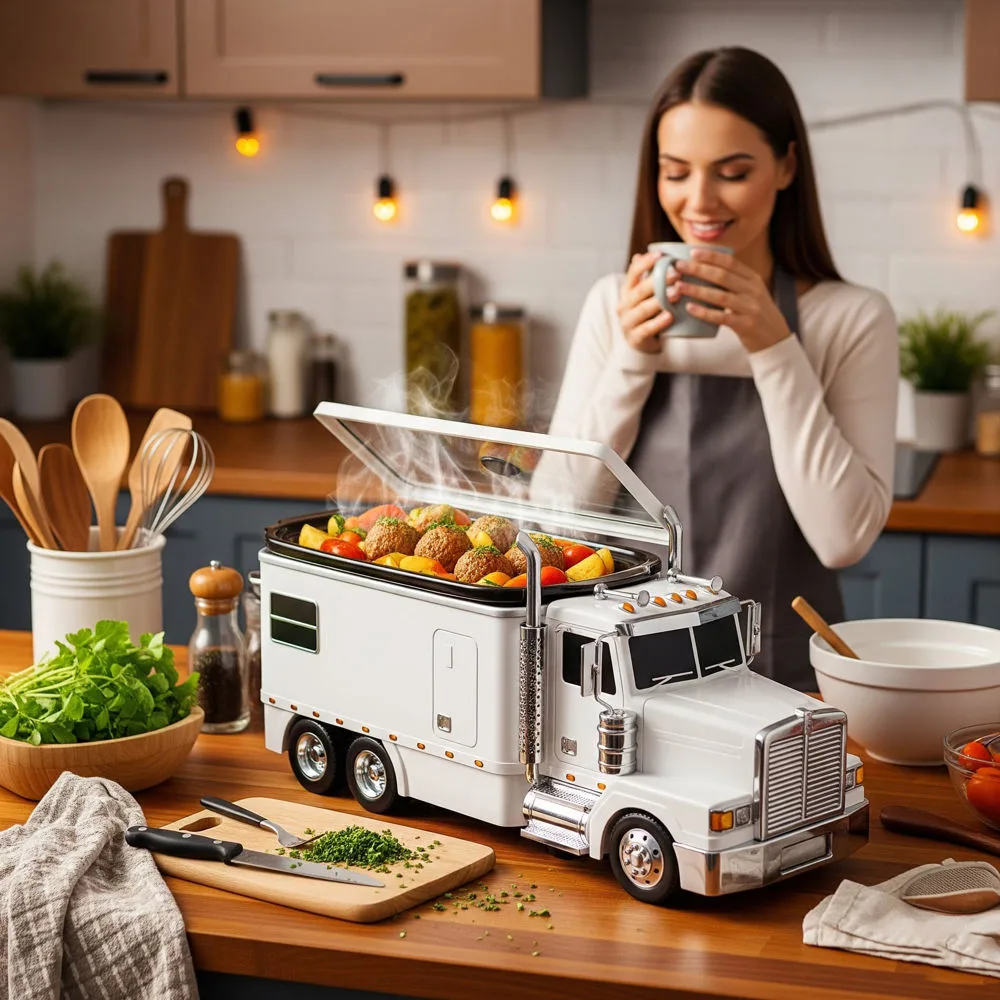
Size and Capacity Considerations
Selecting the appropriate size depends on your eating habits, storage space, and power limitations. Solo drivers typically find 2 to 4 quart models sufficient, while team drivers might prefer larger 6 quart units that can prepare meals for multiple people.
Consider your typical meal preparation style. If you prefer cooking larger batches that provide multiple meals, choose a larger capacity model. Drivers who prefer fresh daily meals might opt for smaller units that cook single serving portions.
Features to Look For
Modern semi truck slow cookers offer various features that enhance the mobile cooking experience. Digital controls with programmable timers allow you to start meals before beginning your drive. Temperature probes ensure food reaches safe cooking temperatures, while automatic keep warm functions maintain food temperature without overcooking.
Look for models with locking lids that prevent spills during transport. Some advanced models include smartphone connectivity, allowing you to monitor cooking progress remotely.
Brand Reliability and Warranty
Choose established brands with proven track records in mobile applications. RoadPro, Koolatron, and Wagan are popular manufacturers that specialize in trucking appliances. Quality construction and reliable warranty support become especially important when your appliance experiences constant road conditions.
Research user reviews from other truck drivers to understand real world performance and reliability. Online trucking forums and communities provide valuable insights into which models perform best under actual road conditions.
Essential Recipes for the Road
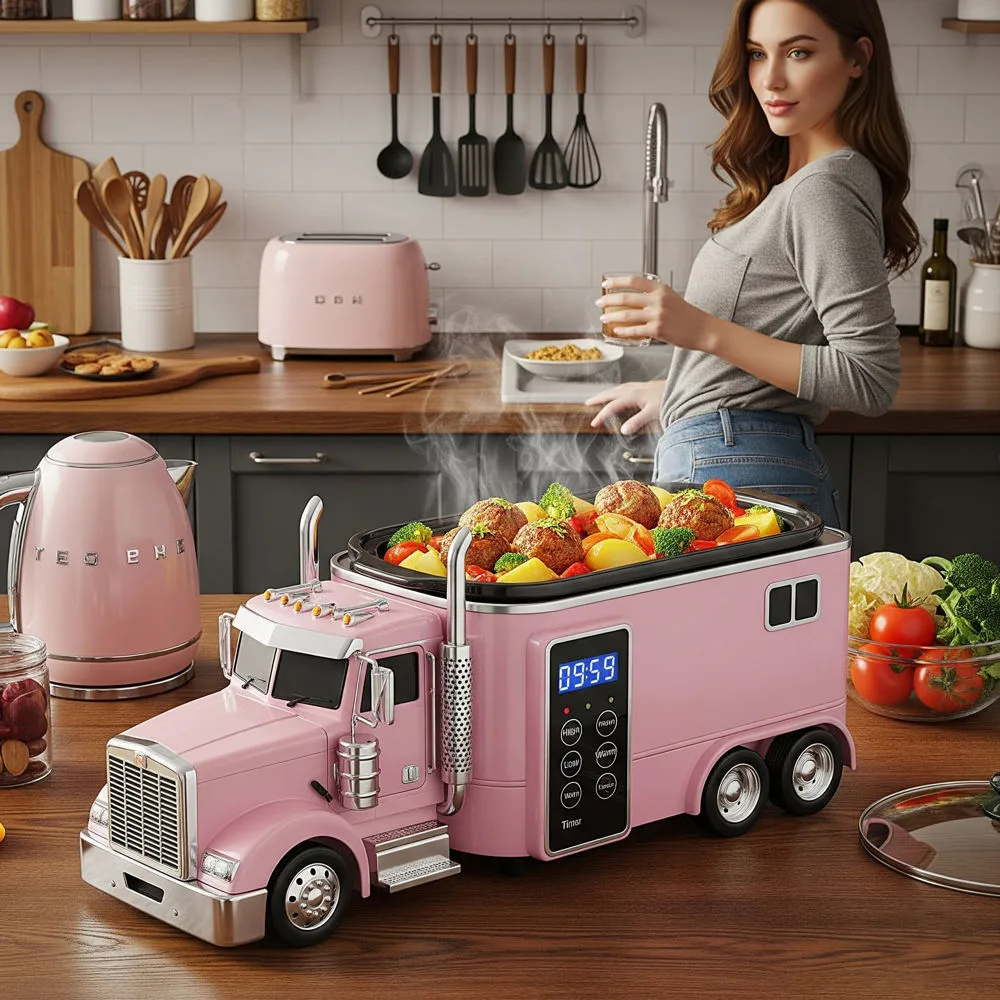
One Pot Meals for Busy Drivers
Semi truck slow cooker recipes should emphasize simplicity and nutrition while requiring minimal preparation time. Hearty stews combining protein, vegetables, and starches provide complete nutrition in a single pot. Chicken and rice dishes, beef stew with vegetables, and pork chili offer satisfying meals that cook while you drive.
Preparation tips include pre cutting vegetables during rest periods and using frozen vegetables to reduce preparation time. Pre seasoned meal kits can be prepared at home and frozen for use on the road.
Make Ahead Meal Strategies
Successful truck slow cooking often involves preparation before leaving home. Prepare ingredient packages that can be quickly assembled and started cooking during mandatory rest periods. Vacuum sealed ingredient packages store well in truck refrigerators and eliminate food waste.
Consider preparing base sauces and seasonings at home that can transform simple ingredients into flavorful meals. Pre made spice blends and sauce combinations add variety without requiring extensive ingredient storage.
Nutritious Options for Long Hauls
Focus on recipes that provide sustained energy and essential nutrients for long driving periods. Lean proteins, complex carbohydrates, and plenty of vegetables support alertness and overall health. Bean based dishes provide fiber and protein while being cost effective and shelf stable.
Incorporate variety through different cooking liquids and seasonings. Broth based meals, cream sauces, and ethnic flavor profiles prevent meal fatigue during extended trips.
Safety and Maintenance
Food Safety on the Road
Maintaining proper food temperatures is crucial when using a semi truck slow cooker. Ensure your appliance reaches and maintains safe cooking temperatures, typically above 140°F for hot holding and 165°F for poultry. Use a quality food thermometer to verify temperatures, especially when trying new recipes.
Proper food storage before cooking is equally important. Keep perishable ingredients refrigerated until cooking time, and never leave cooked food in the danger zone between 40°F and 140°F for extended periods.
Cleaning and Maintenance Tips
Regular cleaning prevents bacterial growth and maintains appliance performance. Most semi truck slow cooker inserts are dishwasher safe, though hand washing with hot soapy water is often more practical on the road. Clean the appliance thoroughly after each use, paying special attention to the rim and lid seal areas.
Descale the heating element periodically if you cook in areas with hard water. White vinegar solutions effectively remove mineral deposits that can affect heating efficiency.
Troubleshooting Common Issues
Common problems include uneven heating, electrical connection issues, and lid seal problems. Uneven heating often indicates mineral buildup or damaged heating elements. Electrical issues typically stem from poor connections or inadequate power supply.
Keep basic repair supplies on hand, including spare fuses, electrical connectors, and replacement gaskets. Many minor issues can be resolved with simple maintenance procedures.
Cost Analysis and Benefits
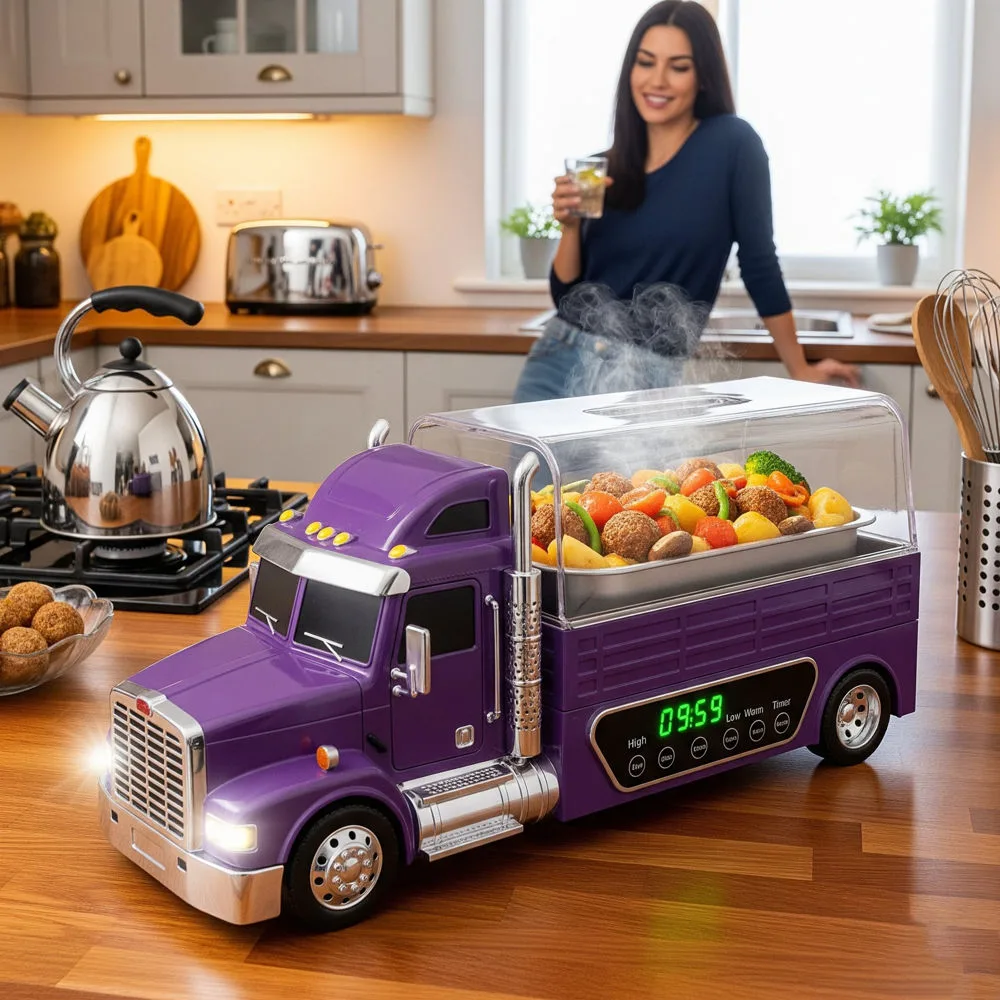
Initial Investment vs Long Term Savings
Quality semi truck slow cookers range from $50 to $300, depending on features and capacity. This initial investment typically pays for itself within the first few months through reduced restaurant expenses. The average truck driver spends $15 to $25 per day on meals, while slow cooker meals often cost $3 to $8 per serving.
Factor in the cost of ingredients, electricity consumption, and any installation expenses when calculating payback periods. Most drivers report significant savings within 60 to 90 days of regular use.
Health Benefits and Improved Quality of Life
Home cooked meals provide better nutrition control compared to typical truck stop options. Reduced sodium content, increased vegetable intake, and portion control contribute to better overall health. Many drivers report increased energy levels and better sleep quality after improving their road diet.
The psychological benefits of home cooked meals shouldn’t be underestimated. Familiar foods and cooking aromas provide comfort during extended time away from home.
Legal and Regulatory Considerations
DOT Compliance and Safety Regulations
Check current Department of Transportation regulations regarding cooking appliances in commercial vehicles. While slow cookers are generally permitted, installation methods and usage restrictions may apply. Some carriers have specific policies regarding aftermarket electrical installations.
Ensure any electrical modifications comply with DOT safety standards and don’t interfere with mandatory safety equipment. Professional installation might be required for permanent mounting systems.
Insurance and Liability Issues
Verify that cooking appliances won’t affect your truck insurance coverage. Some policies exclude coverage for damages related to aftermarket electrical installations. Discuss cooking appliance installations with your insurance provider before making modifications.
Consider liability issues related to food preparation and storage. While personal use cooking is typically not problematic, never prepare food for commercial sale without proper licensing and permits.
Advanced Tips and Techniques
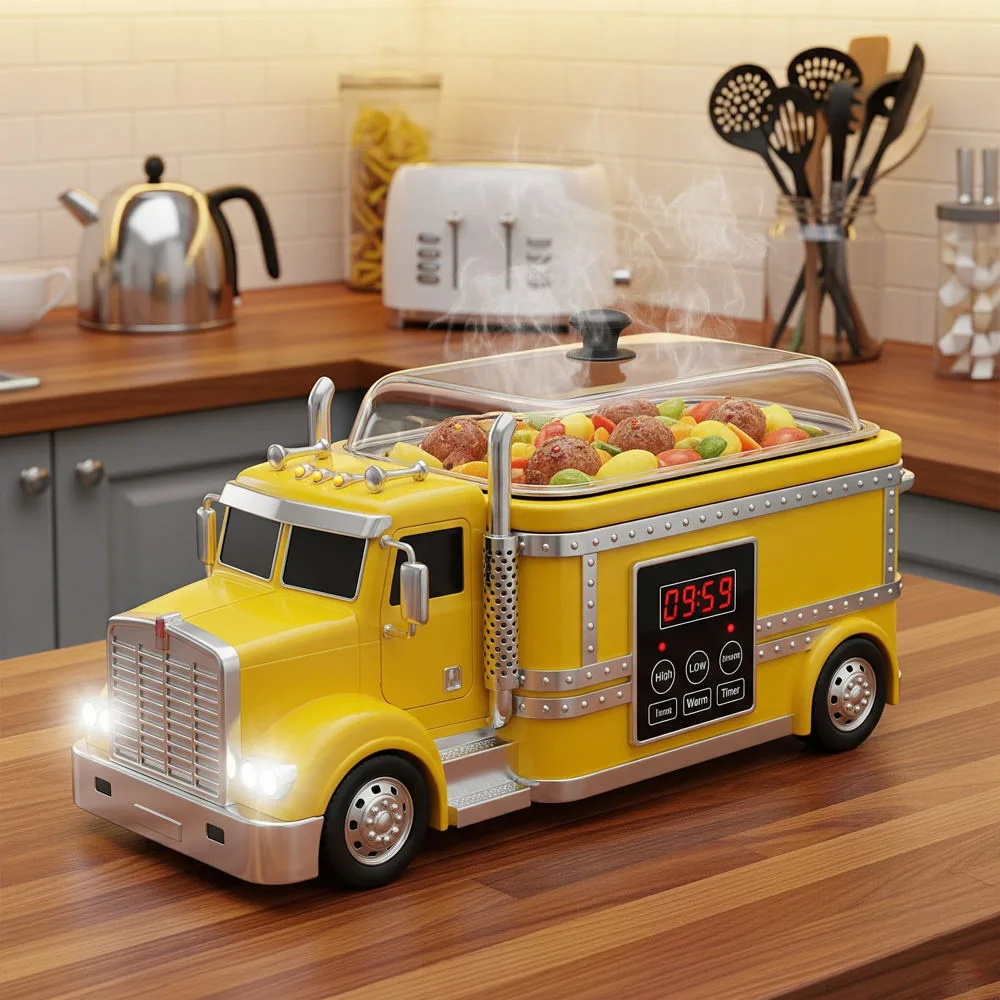
Maximizing Efficiency and Performance
Optimize your semi truck slow cooker performance through proper loading techniques and temperature management. Fill the cooker between half and three quarters full for best results. Layering ingredients properly ensures even cooking, with root vegetables on the bottom and proteins on top.
Use cooking liquid efficiently to prevent burning while maintaining proper moisture levels. Experiment with different liquid combinations to create variety in your meals.
Seasonal Cooking Adaptations
Adjust your cooking approach for different weather conditions and seasons. Summer cooking might emphasize lighter meals with more vegetables, while winter recipes can focus on hearty, warming dishes. Cold weather may require longer cooking times due to ambient temperature effects.
Consider seasonal ingredient availability and storage challenges. Fresh ingredients might be more readily available during certain seasons, while shelf stable ingredients provide consistency year round.
Conclusion
The semi truck slow cooker represents a practical solution to one of trucking’s most persistent challenges: maintaining good nutrition and managing meal costs while spending weeks away from home. These specialized appliances offer professional drivers the opportunity to enjoy home cooked meals, improve their health, and significantly reduce food expenses.
Success with truck slow cooking requires careful selection of appropriate equipment, proper installation and safety procedures, and developing a repertoire of road friendly recipes. The initial investment in equipment and setup time pays dividends through years of better meals and improved quality of life on the road.
As trucking technology continues evolving, slow cookers and other mobile cooking solutions become increasingly sophisticated and user friendly. Drivers who embrace these tools gain a significant advantage in maintaining their health, managing expenses, and enjoying their time on America’s highways.
Whether you’re a seasoned veteran looking to improve your road diet or a new driver seeking cost effective meal solutions, a semi truck slow cooker can transform your approach to eating on the road. The combination of convenience, economy, and improved nutrition makes slow cooking an essential tool for the modern professional driver.

